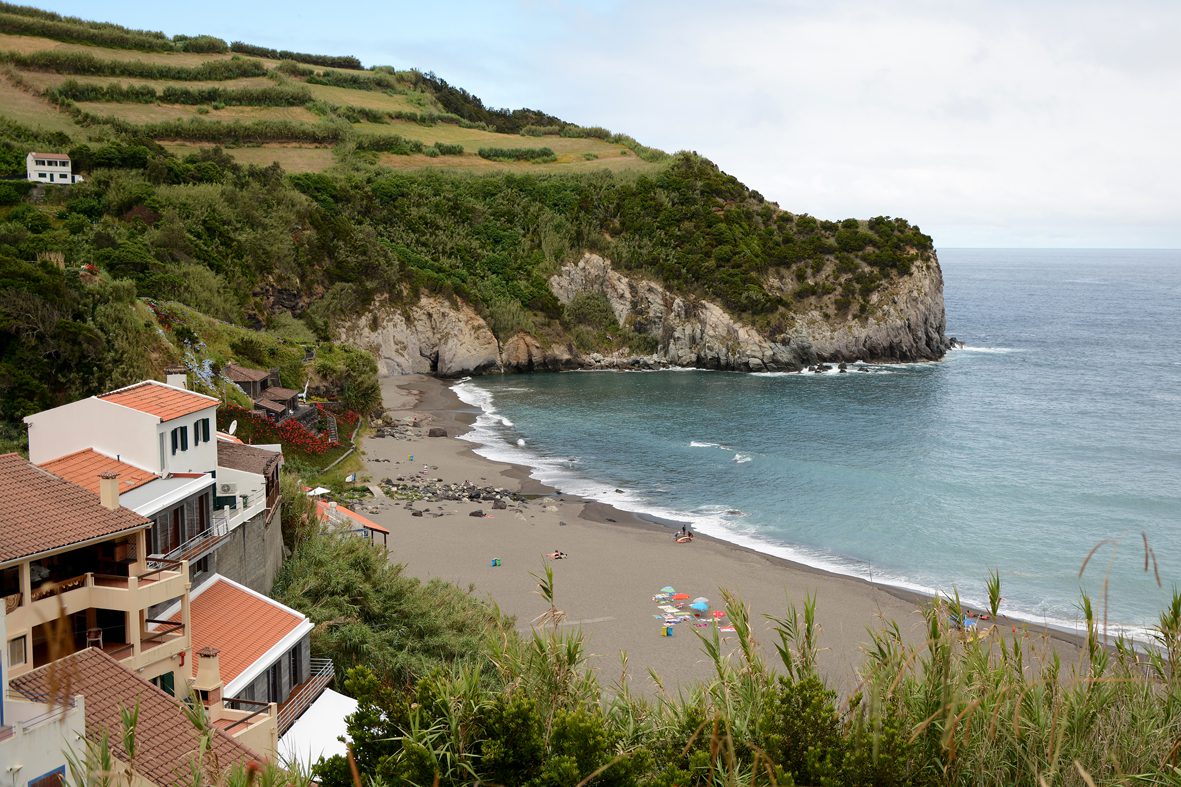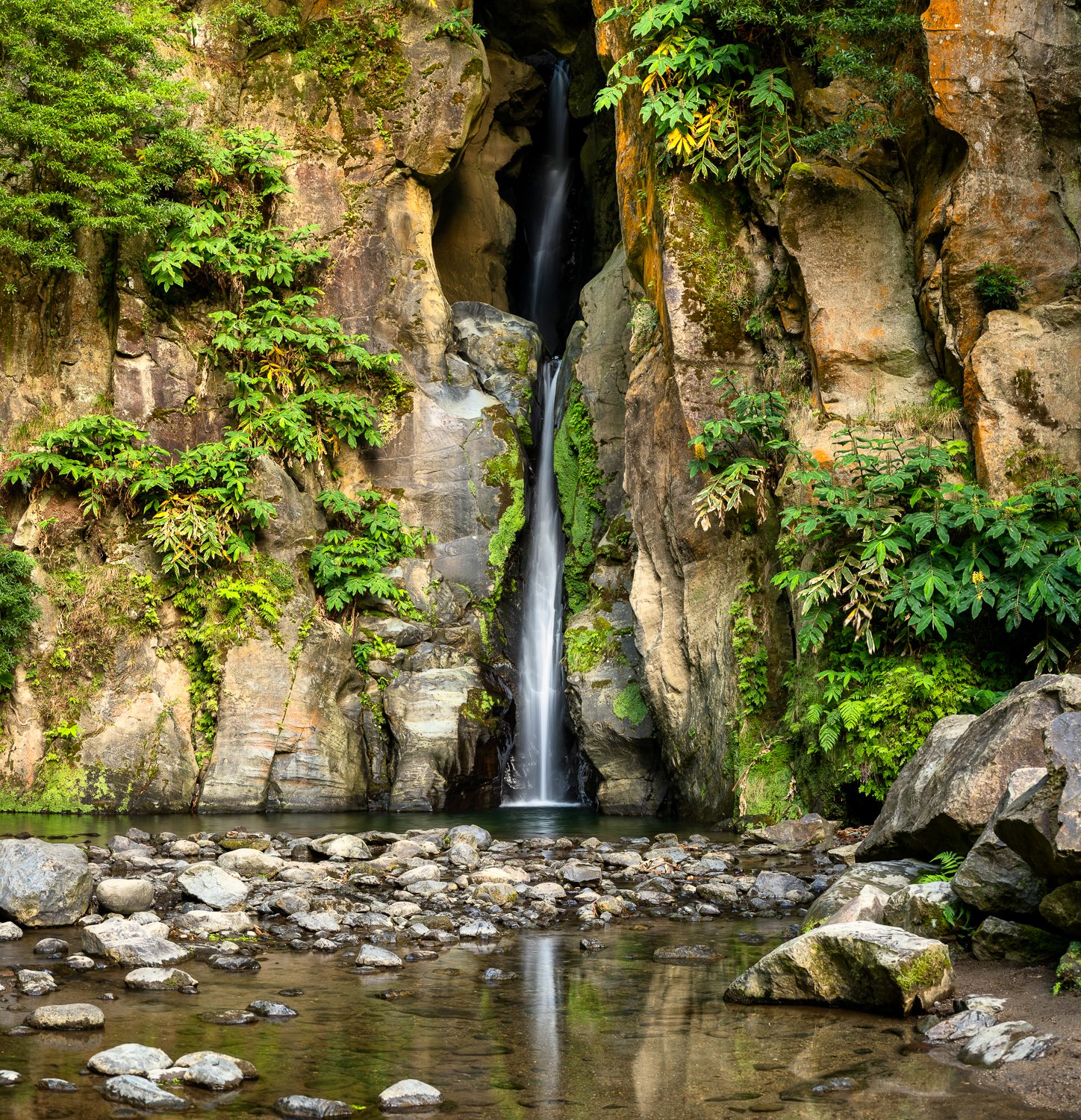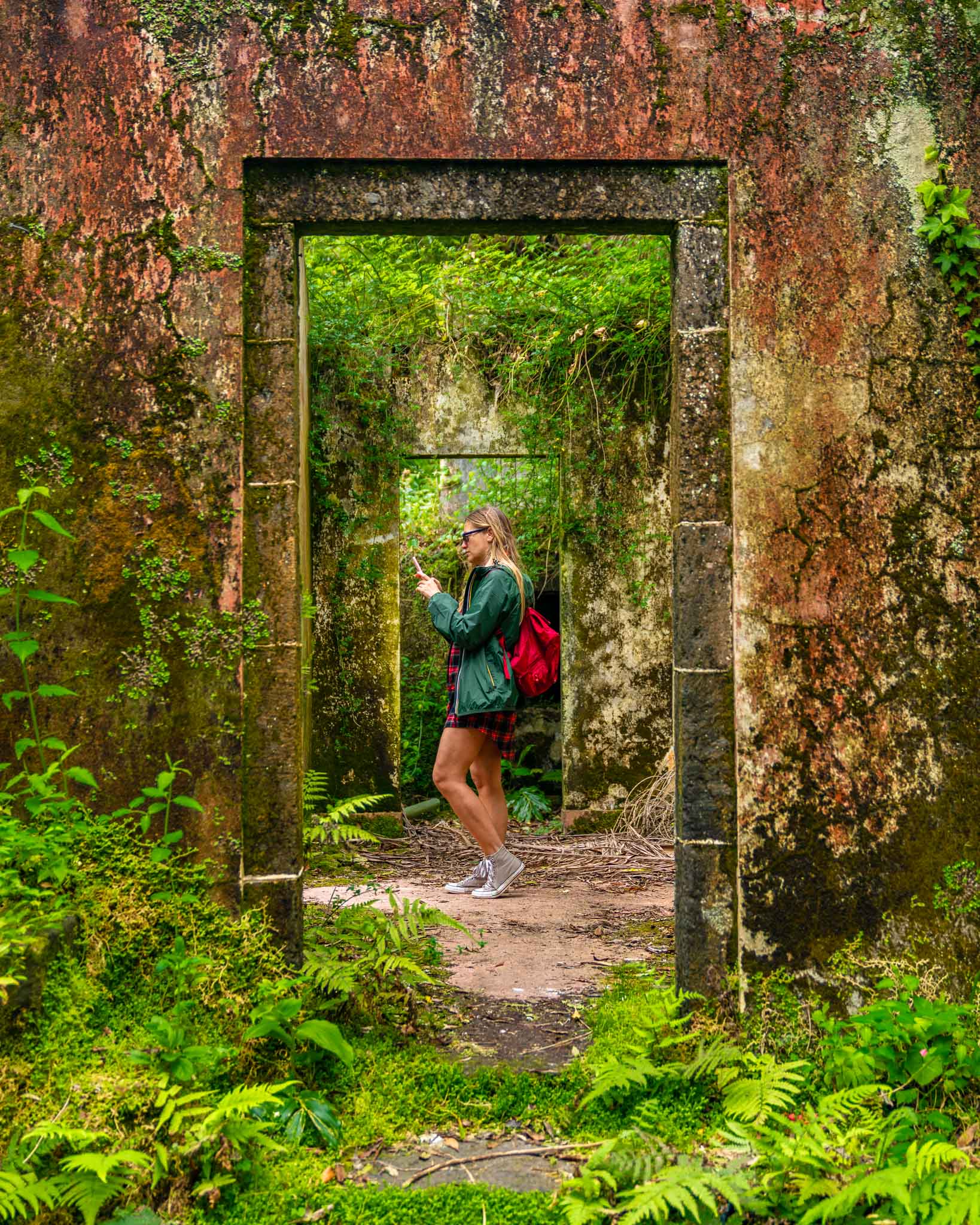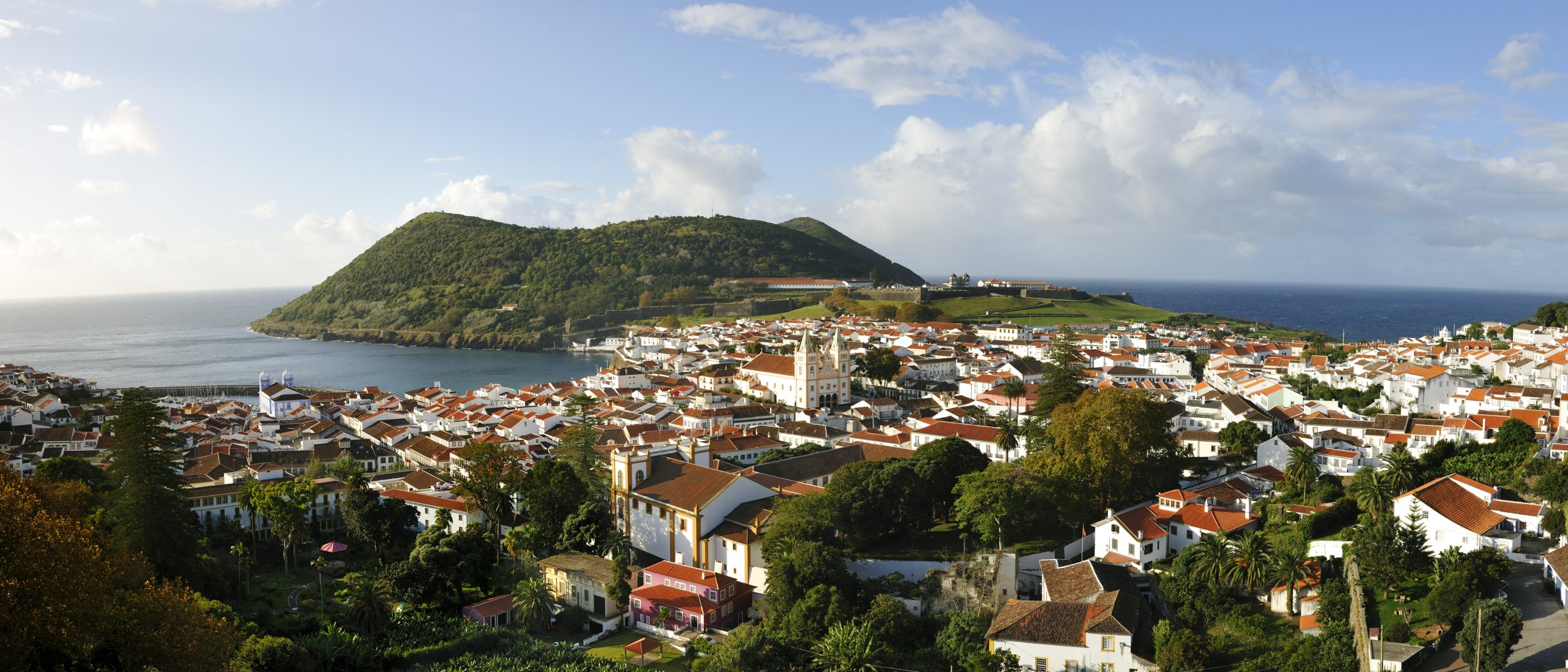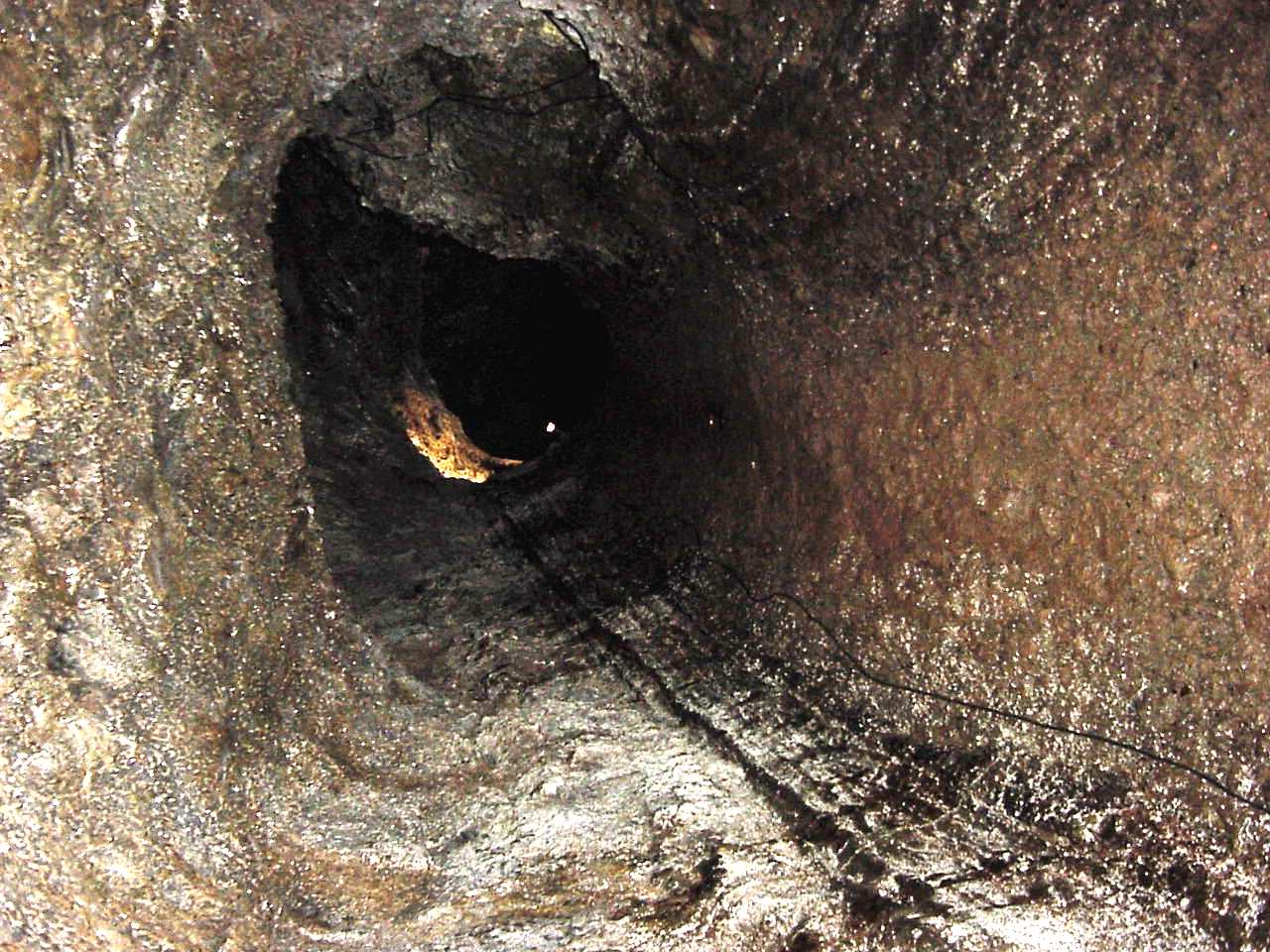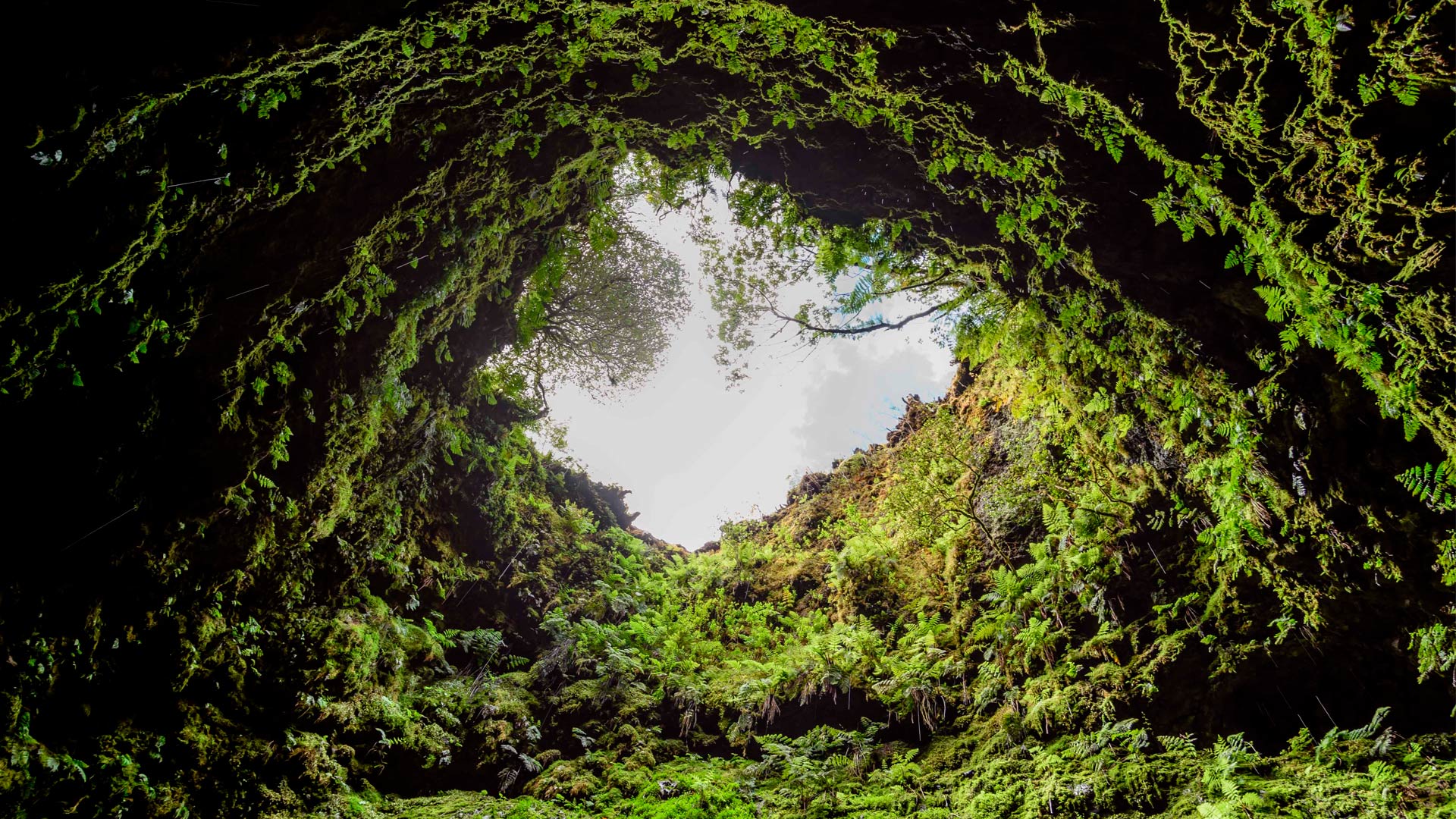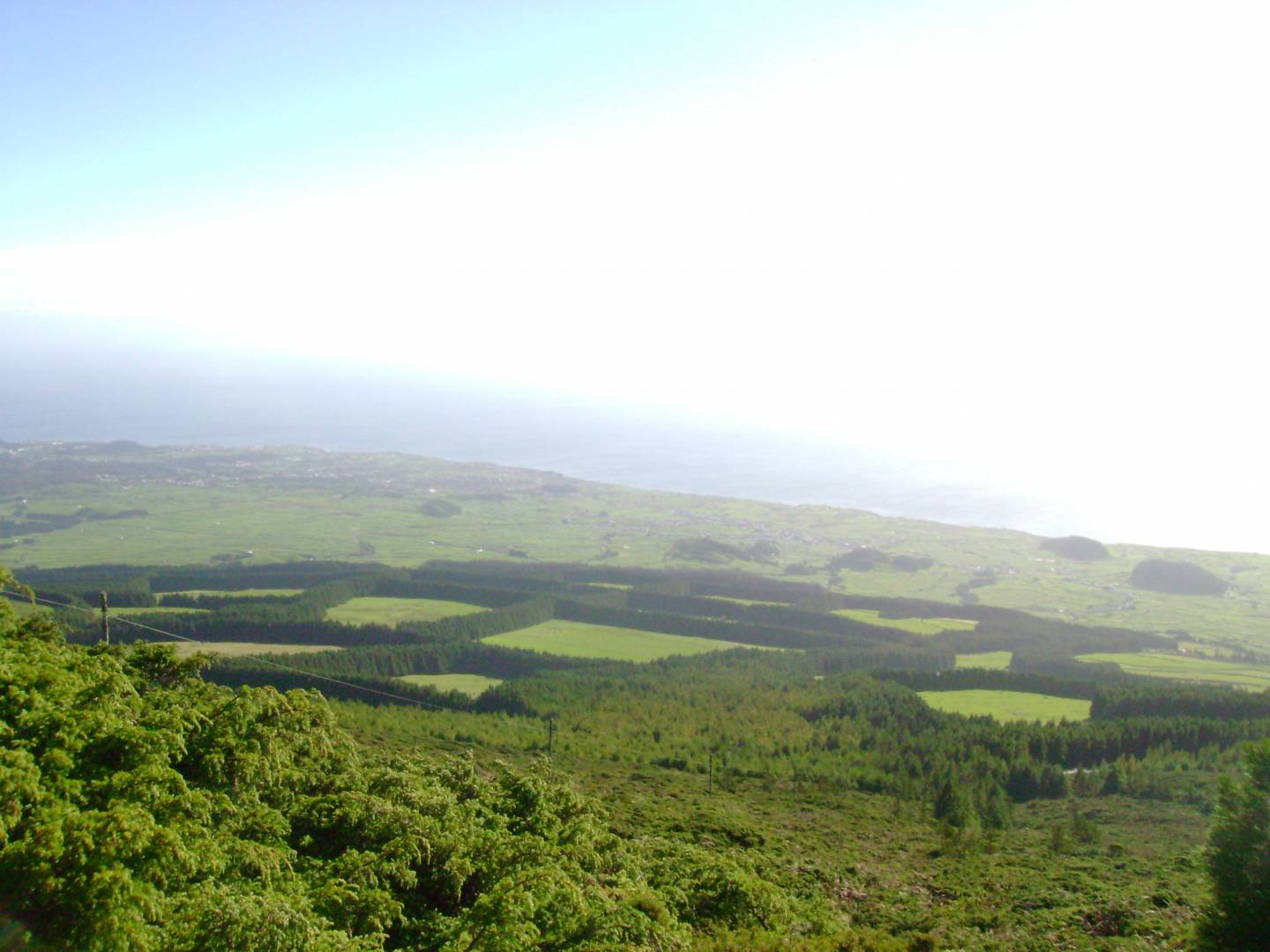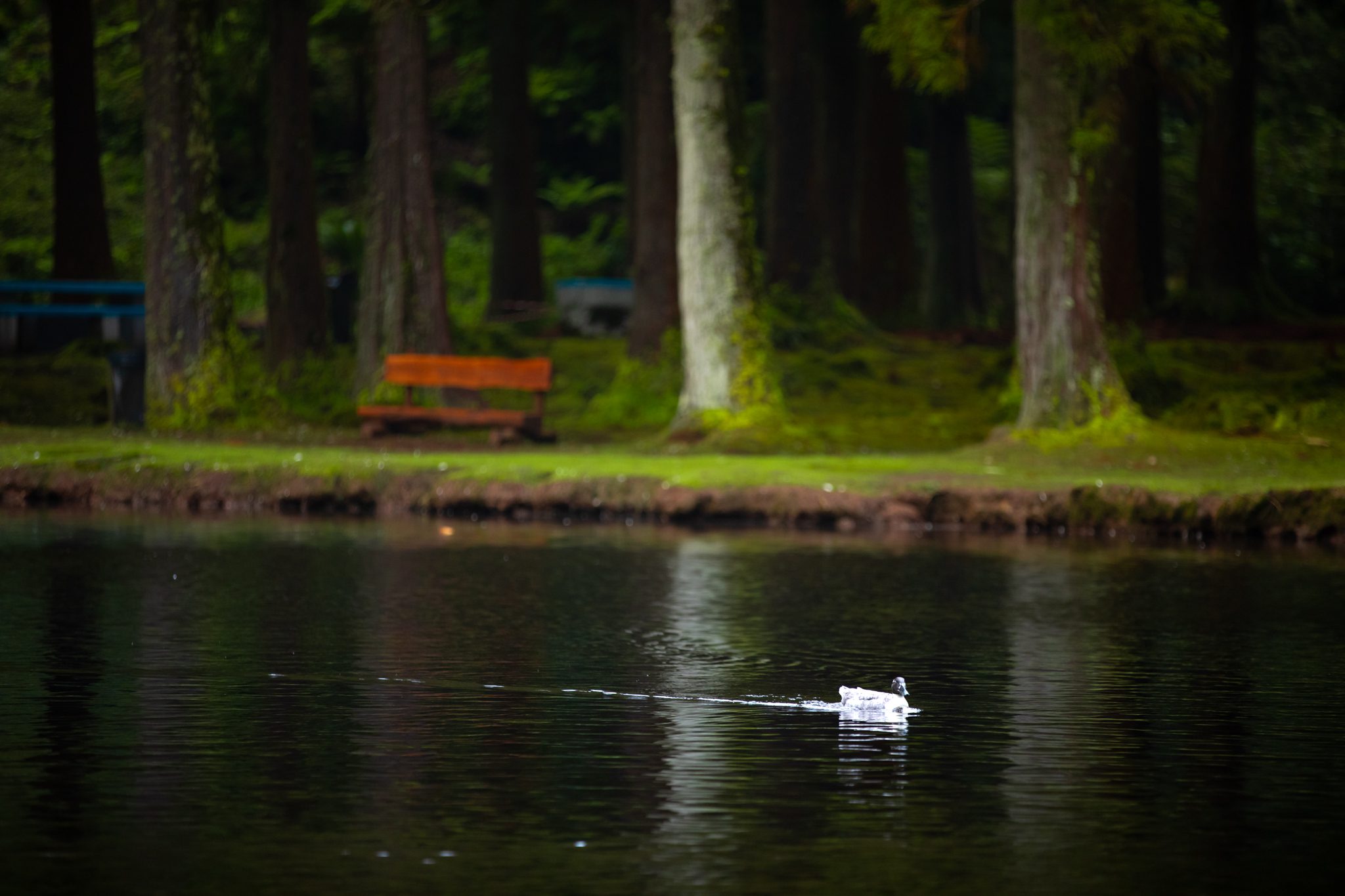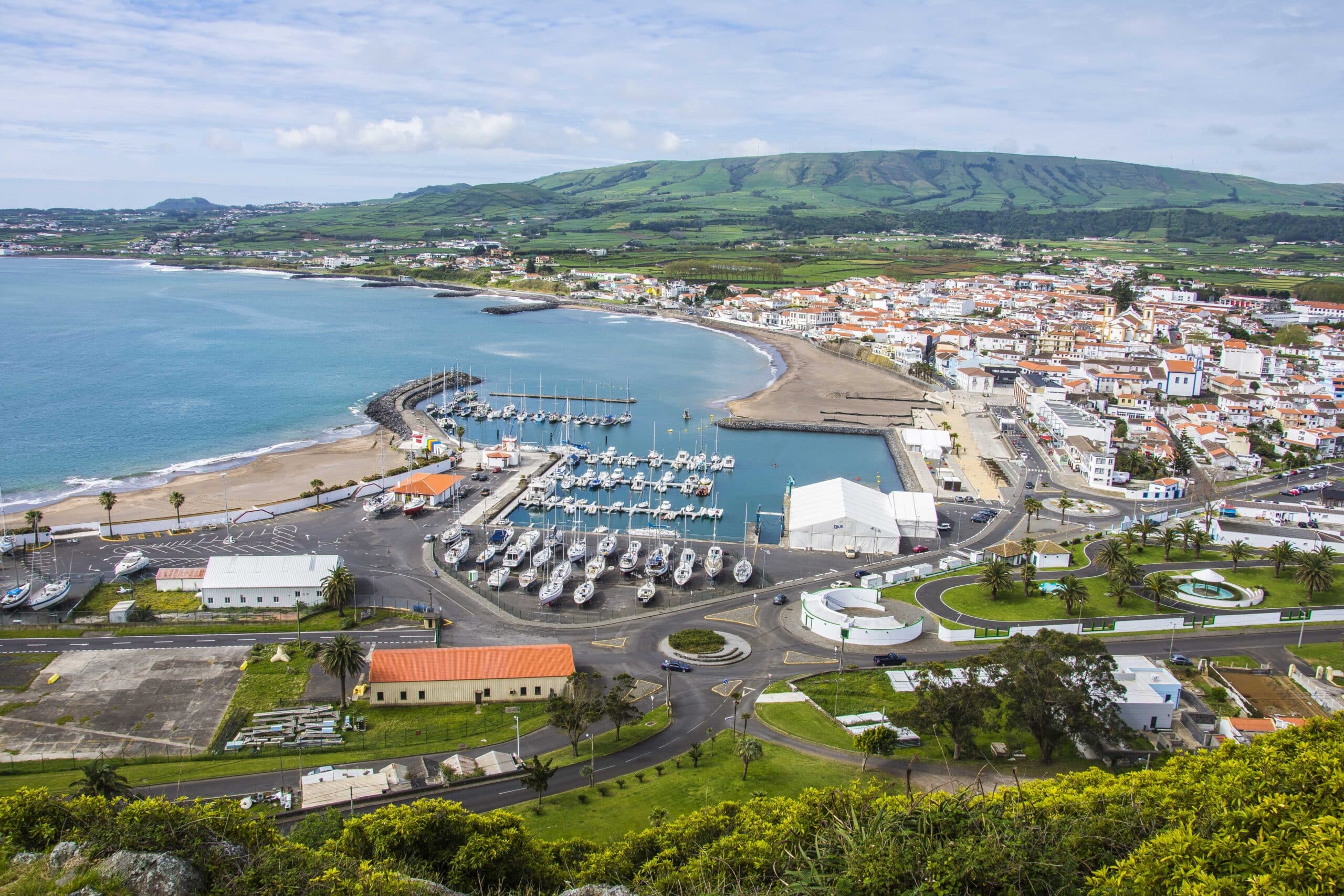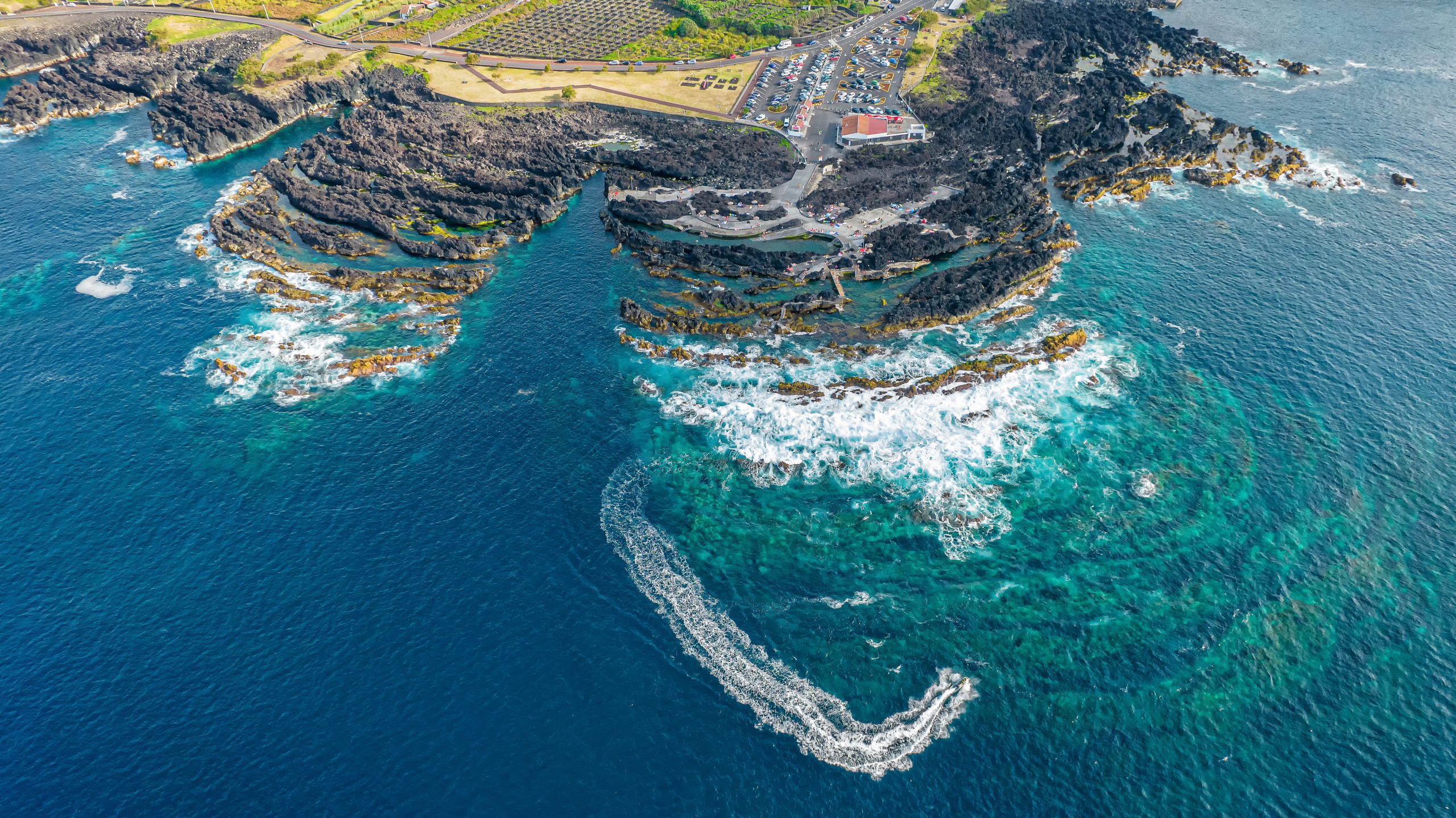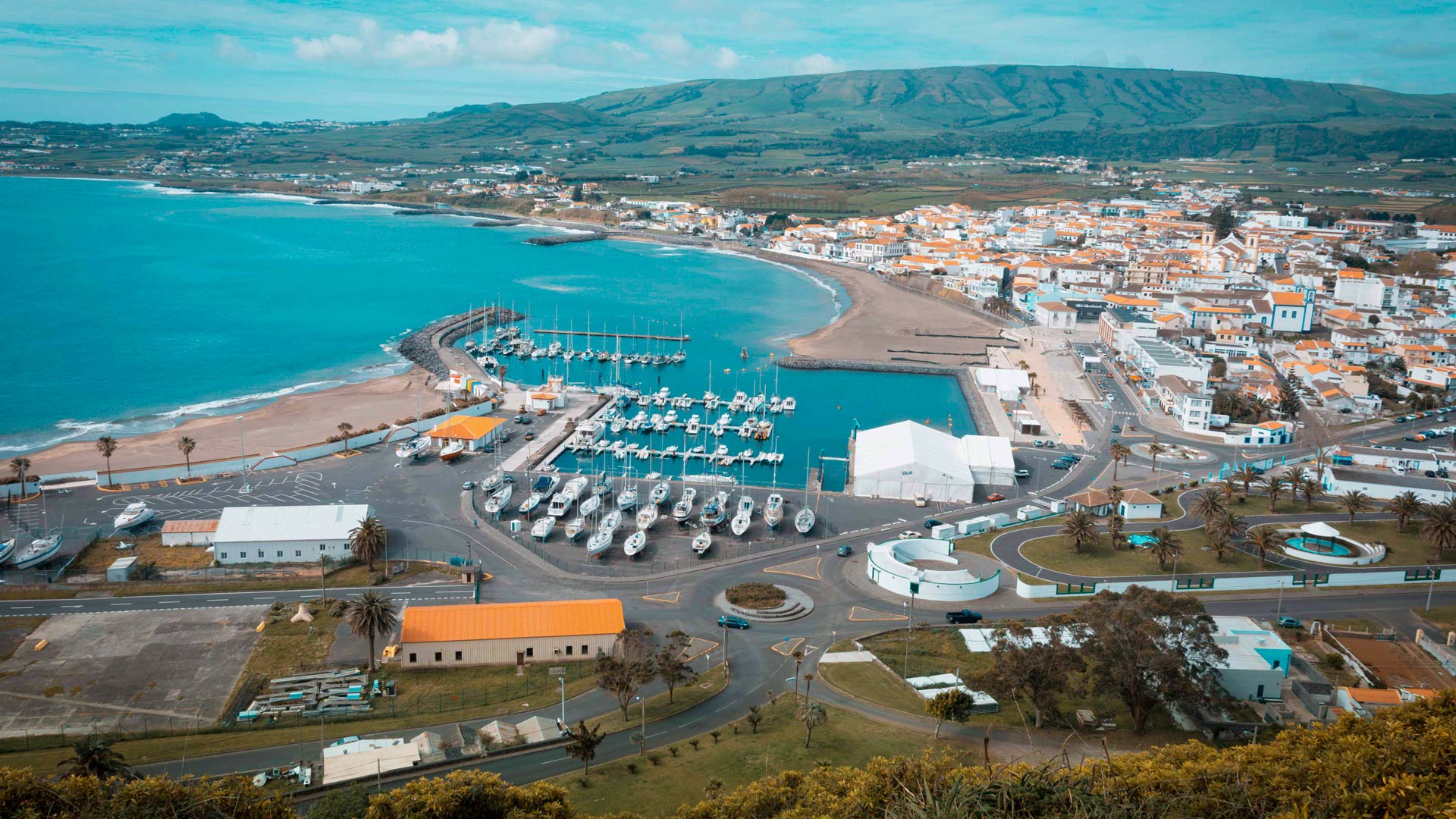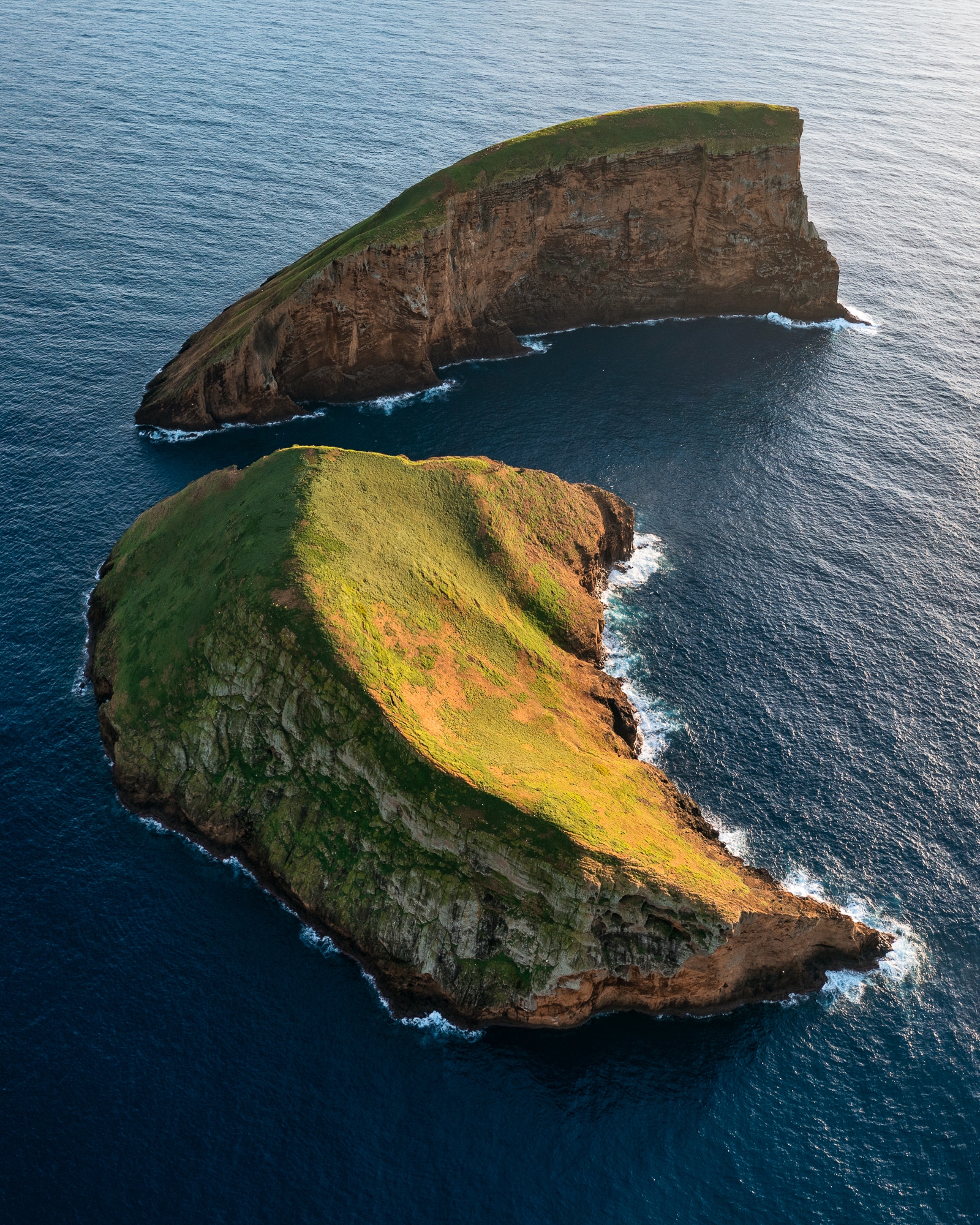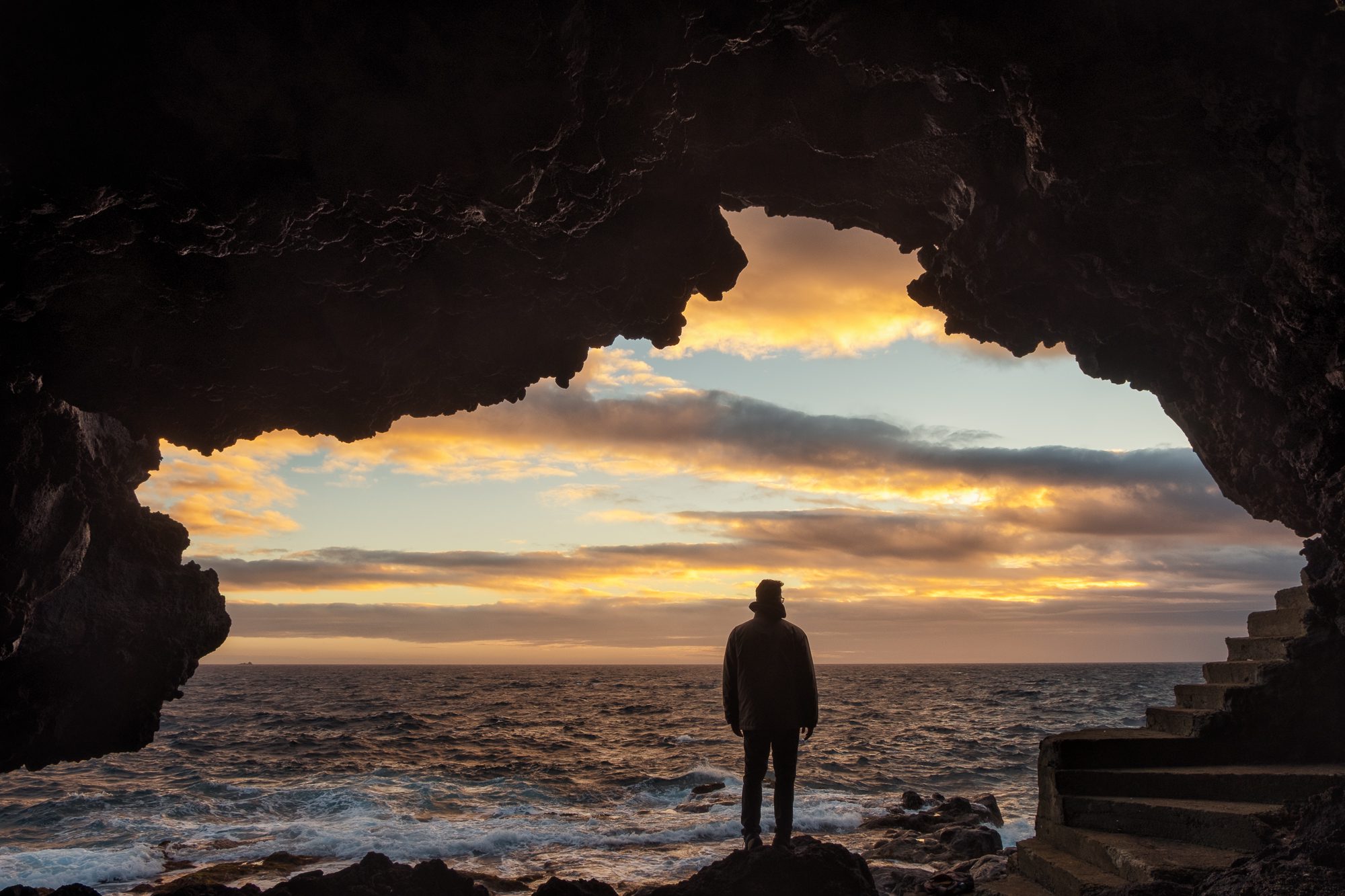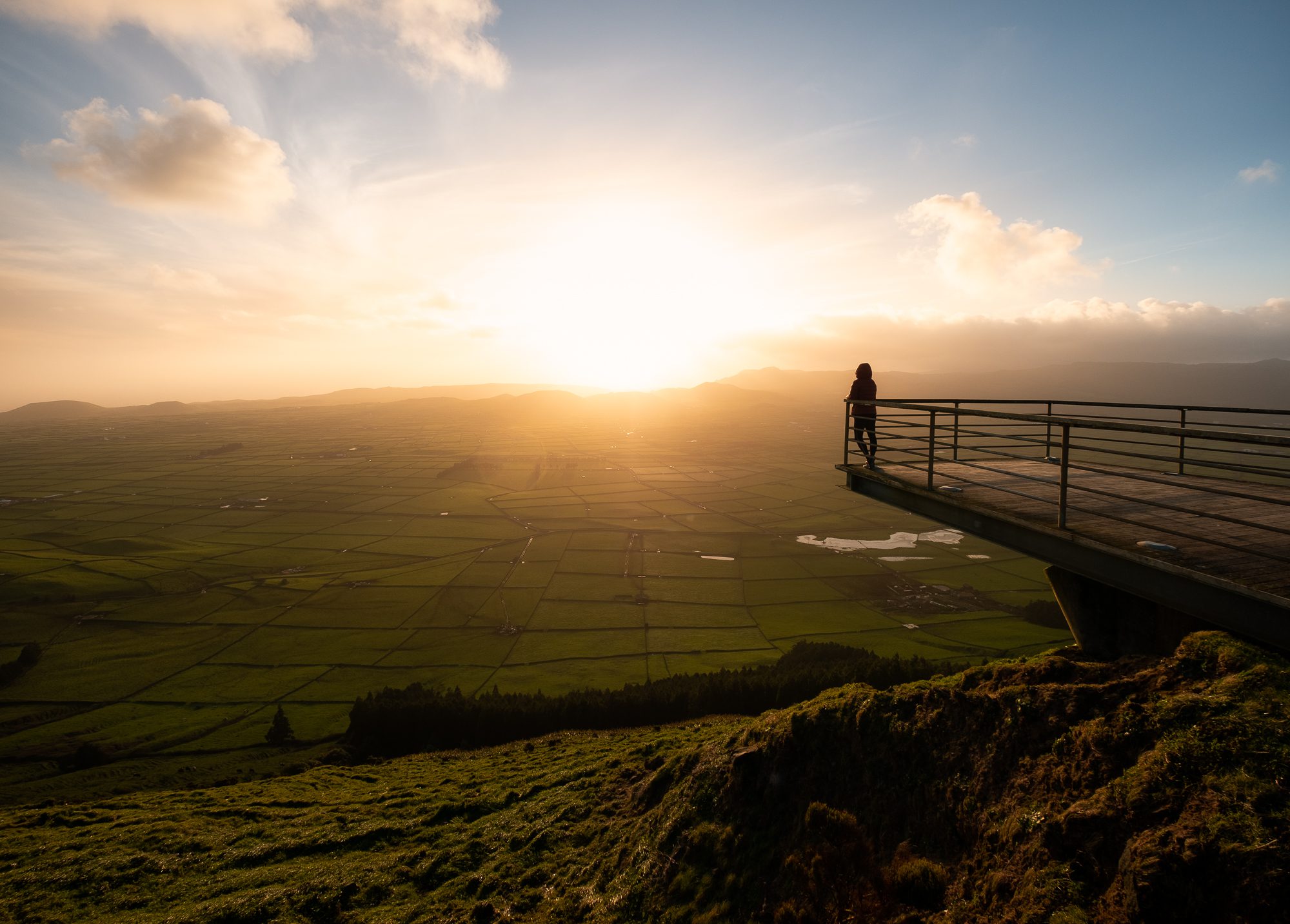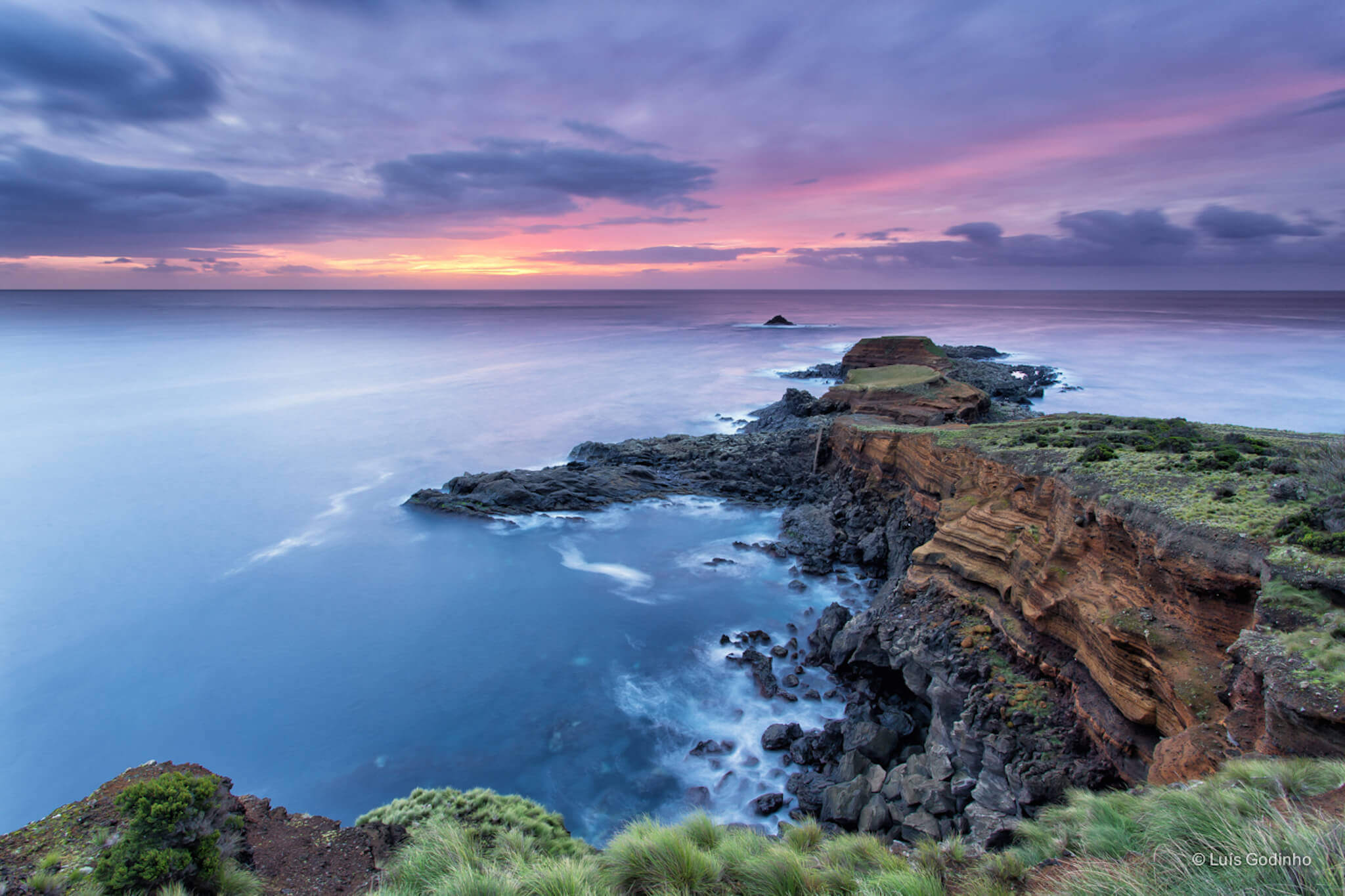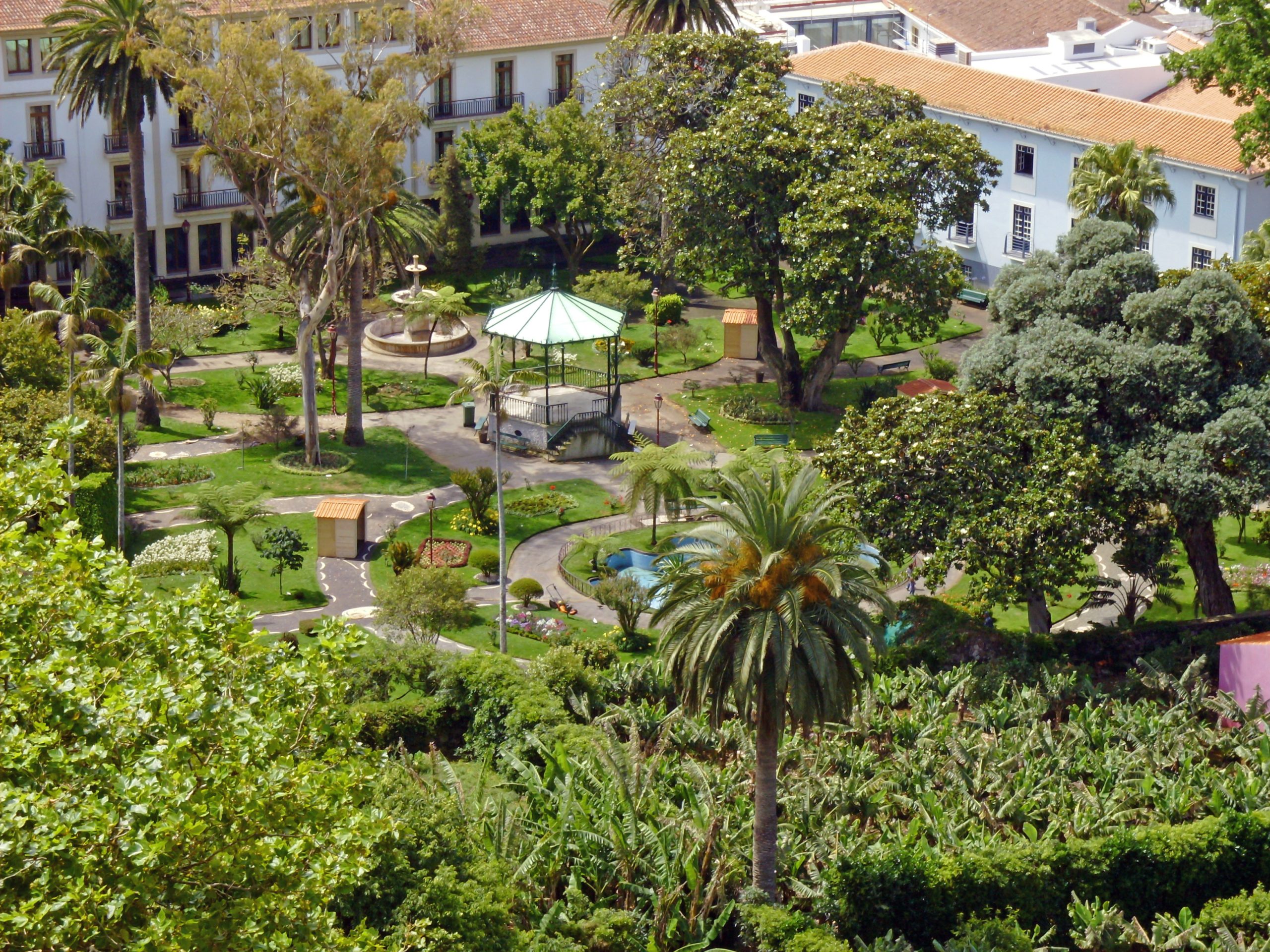Furnas do Enxofre lies in the parish of Posto Santo, in Angra do Heroísmo, on Terceira Island. This fumarolic field, designated as a natural monument, covers around 14 hectares. It sits on the Central Plateau of Terceira and forms part of the Azores UNESCO World Geopark.
This natural attraction showcases volcanic and geothermal activity through visible gas emissions. The gases reach temperatures of 95 °C at the surface and up to 130 °C half a meter deep.
Passing through Terceira? Stay with us to find out more about Furnas do Enxofre. Discover the natural wonders of the municipality of Angra do Heroísmo.
What Are the Furnas do Enxofre?
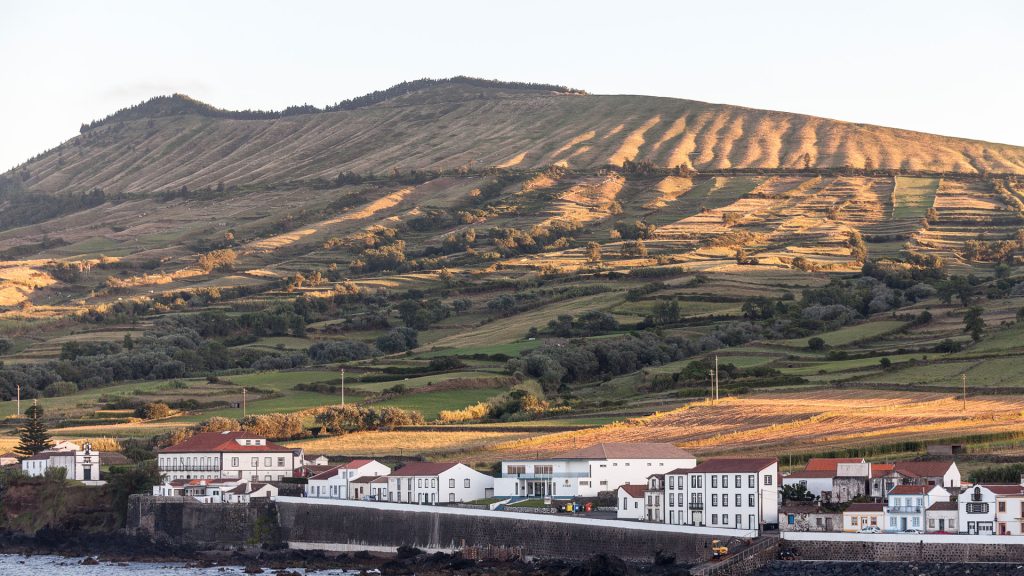
Furnas do Enxofre is a large fumarolic field, considered the most important on the island of Terceira, located in the heart of the island. It was created by geological processes related to the region’s volcanic activity.
Comprising several fissures and cavities that emit sulfurous gases and vapors, the Furnas do Enxofre evolved from a rare ecosystem with extremophiles — microorganisms capable of surviving in extreme environments. Due to their unique landscape, the Furnas do Enxofre are a popular tourist destination. However, prolonged exposure to sulfurous gases can be harmful to your health.
Geology and Volcanology
Furnas do Enxofre consist of numerous volcanic gas vents — fumaroles — that emit gases at varying temperatures, some of which are incredibly high. These gaseous emissions primarily consist of carbon dioxide (approximately 95 percent), hydrogen sulfide (roughly 3 percent), sulfurous gas, hydrogen, nitrogen, methane, and other gases in small proportions.
The emissions of hot, chemically aggressive gases constantly alter the surrounding rocks into clay materials. These are associated with secondary minerals such as yellow sulfur masses and crystals, reddish iron oxides, and whitish aluminum oxides.
Fauna and Flora
Furnas do Enxofre is part of an impressive wetland complex that protects habitats and ecosystems, which are home to various endemic bryophyte species, particularly the mosses Sphagnum nitidulum and Bazzania azorica.
In terms of endemic flowering plants, we can highlight herbaceous plants such as Lysimachia azorica, Cardamine caldeirarum, and Hedera azorica, as well as various tree species such as:
- Blueberry (Vaccinium cylindraceous);
- Heather (Erica azorica);
- Holly (Ilex azorica);
- Hawthorn (Frangula azorica);
- Laurel (Laurus azorica).
What to Do in Furnas do Enxofre

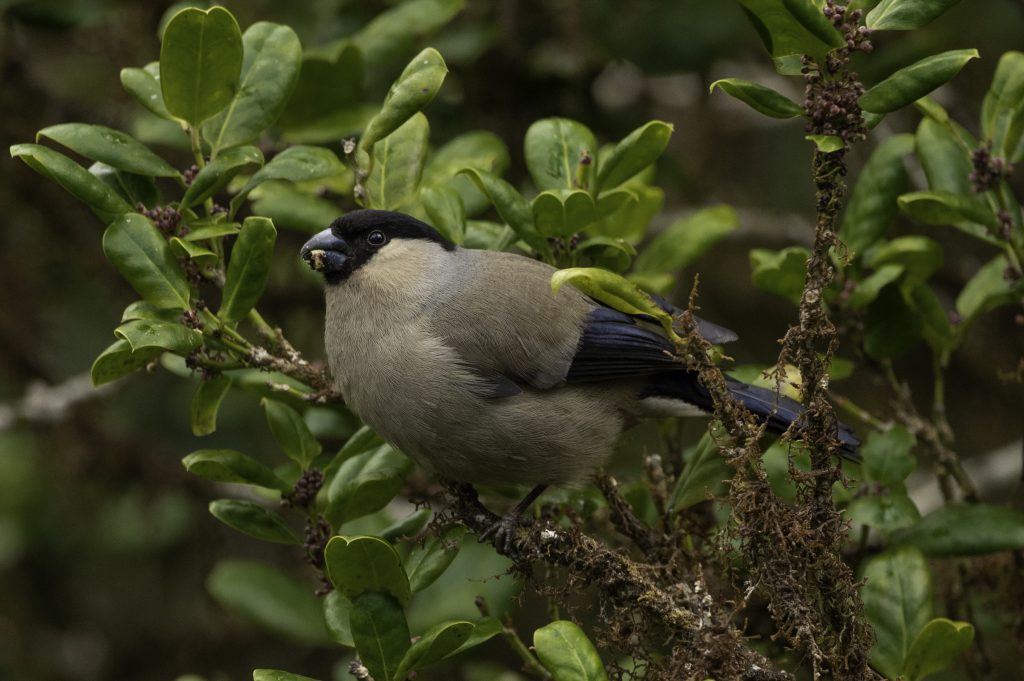

As mentioned, Furnas do Enxofre is a tourist attraction of great geological and natural importance. For this reason, there are various activities and experiences that visitors can enjoy in the fumarolic field, including:
- Observing the Landscape: Explore the natural cavities and observe the unique landscape formed by the gases and vapors that emanate from the fissures in the ground — a rare opportunity to capture impressive photos of the unusual geological landscape.
- Walking Trails: If you enjoy walking, you can explore the trails surrounding Furnas do Enxofre, taking in the surrounding area and observing the native flora and fauna of the Azorean forests.
- Birdwatching: This place is home to several species of birds, including the Cagarro, Priolo, Milhafre, and Torcaz Pigeon.
However, suppose you like to learn more about the place’s geological and natural history, as well as safety tips. In that case, you should hire a guide who specializes in this region, specifically, Furnas do Enxofre.
Plan Your Visit to Furnas do Enxofre

Best Time to Visit
Due to its location, Terceira‘s temperatures remain mild throughout the year. However, in the winter months, periods of rain and lower temperatures become more frequent. In this sense, the best time to visit Furnas do Enxofre is usually between May and September when the days are warmer and sunnier.
However, it’s important to note that cloudy skies are a common feature of all the islands in the archipelago, so it may sometimes be challenging to appreciate the true splendor of some of Angra do Heroísmo’s viewpoints.
Check all our articles about the weather in the Azores throughout the year 🌤️ ☔️: January | February | March | April | May | June | July | August | September | October | November | December
How to Get to Furnas do Enxofre
To plan your visit to Furnas do Enxofre, you need to determine the length of your stay on Terceira and the time of year you wish to travel. This way, you’ll be able to buy flights and book accommodation with excellent value for money.
It is, therefore, recommended that you plan an itinerary with all the places you would like to visit in Angra do Heroísmo. To leave Angra do Heroísmo in the direction of Furnas do Enxofre, you’ll have to travel around 11.3 km, which takes 12 minutes by car or taxi and 45 minutes by bus.
Planning a trip to the Azores? These articles will help you: How to Get to the Azores 🗺️ | Azores airports 🛬 | Flights between islands ✈️ | Ferries between islands ⛴️ | Which island to choose? 🏝️ | What airlines fly to the Azores? 🛩️
Where to Eat
If you need somewhere to eat near Furnas do Enxofre, click here. This link will take you to the 10 best restaurants on TripAdvisor.
Where to Stay
To make your life easier, we’ve filtered the search by:
Azores Guide Book
Azorean Language & Phrases 🗣️ | Currency & Banks 💵 | Credit Cards & Traveler’s Cheques 🏧 | Driving in the Azores 🚗 | Electricity 🔌 | Experiences & Tours 🗺️ | Health & Safety 🩺 | Internet & Wi-Fi Access 🛜 | Phones & Mobile Service 📞 | Post Offices & Buying Stamps ✉️ | Public Holidays 🏖️ | Shopping 🛒 | Time & Daylight 🕒 | Whale Watching Guide 🐳 | Best Island to Visit 🏞️
Nearby Attractions
Algar do Carvão

Algar do Carvão is an 80-meter-deep volcanic chimney with a crystal-clear lake inside. Admire the most beautiful opal stalactites and stalagmites. This site is a must-visit due to its international relevance and scientific and tourist interest. To access this underground wonder, you’ll have to go down the 338 stairs and through the tunnel into Algar do Carvão.
Once inside Algar do Carvão, nothing feels like our world; it’s as if you’re walking on another planet. The impressive stalactites and evidence of the eruption that gave rise to the cave are a testament to its unique beauty. Look inside the cave. You will find magnificent whitish walls with red veins. The rocks are rich in iron and silica minerals, and they also contain layers of basalt.
Algar do Pico do Funil
Algar do Pico do Funil is a cave located in the parish of Porto Judeu, in the municipality of Angra do Heroísmo, on the island of Terceira. This cavity, the result of a geological accident, has a volcanic morphology in the form of a lava tube located in the Encosta Lava Field. Approximately 6 meters long, 3 meters wide, and 15 meters high, Algar do Pico do Funil is classified as part of the Natura 2000 Network due to its characteristics and location.
Christmas Cave
The Christmas Cave (Gruta do Natal in Portuguese) is located near the Picos Gordos and is part of the Serra de Santa Bárbara and Mistérios Negros Natural Forest Reserve. This cave is well-prepared to welcome tourists and offers the best conditions. Despite the marks of human presence, this cave features a complementary geological structure — comprising different types of lava, staphylites, and side counters — and a cave. Outside the cave, there are several high-altitude pastures and cryptomeria forests.
The Christmas Cave is an extensive, magical lava tunnel, approximately 697 meters long. This unique underground experience will leave you speechless with the bizarre shapes and colors that characterize the atmosphere of this place so well. Explorers initially knew this cave as the Black Gallery, but later renamed it the Horse Cave after finding the remains of a horse bone there.

Did you know
On 25 December 1969, they celebrated a mass inside the cave, the day they opened the cave to the public for the first time. After this event, they renamed the cave the Christmas Cave.
Lagoa das Patas

Lagoa das Patas, also known as Lagoa da Falca, is located in the Lagoa das Patas Recreational Forest Reserve in the parish of Doze Ribeiras, in Terceira. Fed by a stream from the Serra de Santa Bárbara, cryptomeria forests surround this lagoon.
Azaleas, hydrangeas, and other shrubs and trees surround the whole lagoon. A small cryptomeria forest creates a leisure park that allows users to enjoy the space comfortably. The Lagoa das Patas Recreational Forest Reserve is an ideal spot for spending leisure time. The cryptomeria forest that surrounds the lagoon features scattered picnic areas.
Rocha do Chambre Viewpoint

The Rocha do Chambre Viewpoint is an observation point located on the Rocha do Chambre rock formation in the interior of Terceira. This viewpoint offers a magnificent panoramic view of the surrounding landscape, including the sea and the island’s mountains. It’s a popular destination for locals and tourists to admire the beauty of the surrounding nature and breathe in the fresh air.
To reach this place, you must pass through the Biscoito da Ferraria Protected Area and take the Rocha do Chambre Trail (PRC06 TER). This circular route is approximately 8.8 kilometers long and of medium difficulty. Along the way, endemic species typical of the Azorean flora will surround several bridges and watercourses.
Check all our articles about each one of the most relevant points of interest on Terceira Island: Algar do Carvão | Biscoitos | Furnas do Enxofre | Gruta do Natal | Jardim Duque da Terceira | Lagoa das Patas | Miradouro Serra do Cume | Miradouro da Serra de Santa Bárbara | Monte Brasil | Ponta das Contendas | Praia da Vitória | Gruta das Agulhas | Ilhéus das Cabras | Miradouro do Facho
Complementary Information
Best Season to Visit the Azores
The Azores Archipelago boasts a unique climate that shapes its lush landscapes, making it a splendid year-round destination. With mild temperatures and minimal fluctuations, each season offers something unique. Spring averages 16 °C, summer reaches 21 °C, autumn cools to 18 °C, and winter remains mild at 14 °C.
→ For a detailed breakdown of the weather by month, check the following links 🌤️☔️: January | February | March | April | May | June | July | August | September | October | November | December
How to Get to the Azores
The Azorean Archipelago is easily accessible through numerous flight routes. Lisbon and Porto are the main entry points to the continent, with direct flights available to São Miguel (PDL), Terceira (TER), Faial (HOR), Pico (PIX), and Santa Maria (SMA). To find the best flight, use search engines like eDreams or Skyscanner. These platforms let you compare prices and schedules from multiple airlines in one convenient location.
For more details on how to get to the Azores, take a look at our complete guide. But what if you want to explore beyond your arrival island? We’ve got you covered!
- Azores airports 🛬
- Flights between islands ✈️
- Ferries between islands ⛴️
- Which island to choose? 🏝️
- What airlines fly to the Azores? 🛩️
→ Once you’ve found the perfect route, book your tickets and get ready to experience one of the world’s most stunning island groups!
Travel Essentials
Essential Information for your Azores trip: Azorean Language & Phrases 🗣️ | Currency & Banks 💵 | Credit Cards & Traveler’s Cheques 🏧 | Driving in the Azores 🚗 | Electricity 🔌 | Experiences & Tours 🗺️ | Health & Safety 🩺 | Internet & Wi-Fi Access 🛜 | Phones & Mobile Service 📞 | Post Offices & Buying Stamps ✉️ | Public Holidays 🏖️ | Shopping 🛒 | Time & Daylight 🕒 | Whale Watching Guide 🐳 | Best Island to Visit 🏞️
Useful Tools & Apps
The weather in the Azores can be variable, so it’s helpful to use some apps before visiting the islands. Spotazores provides live camera feeds from the main tourist attractions, allowing you to check the weather and plan your visit. For accurate weather predictions, use Windy or Windguru — they provide the most reliable predictions.
Video
Conclusion
Furnas do Enxofre are situated in the heart of Terceira Island and are a vital natural monument in the Azorean archipelago. Here, you can appreciate several unique volcanic manifestations. While you’re in Angra do Heroísmo, take the opportunity to see the Furnas do Enxofre and their magnificence due to the emission of sulfur gases and vapors.
However, don’t forget to visit the other beautiful natural attractions in the region, such as Algar do Carvão, Gruta do Natal, and the Rocha do Chambre Viewpoint, which offers a fantastic view of nature.
Authors’ Note
I am pleased to inform you that all the recommendations in this article are based on my personal experience and observations. As the author, I have personally visited each attraction mentioned, ensuring that every suggestion is grounded in first-hand knowledge and genuine enthusiasm.
FAQs
Furnas do Enxofre is located in the Posto Santo parish, within the municipality of Angra do Heroísmo, on the island of Terceira, in the Azores.
The gas emissions at Furnas do Enxofre can reach temperatures of 95 °C at the surface and 130 °C at a depth of 0.5 meters.
An interpretative circuit allows visitors to safely explore the fumarolic field, providing insight into the volcanic processes that formed Furnas do Enxofre.
It is recommended to visit Furnas do Enxofre between May and September, when the weather is warmer and sunnier, although the weather in the Azores can be unpredictable throughout the year.



